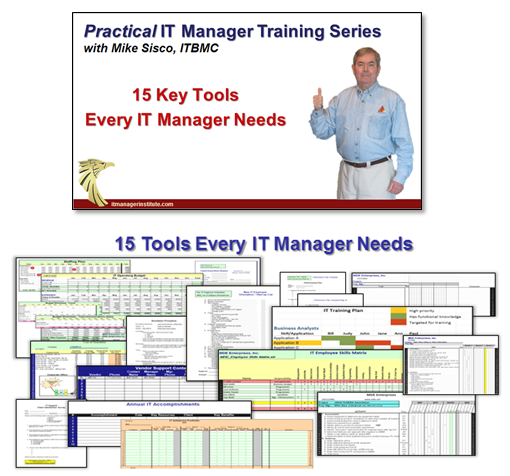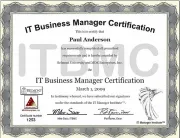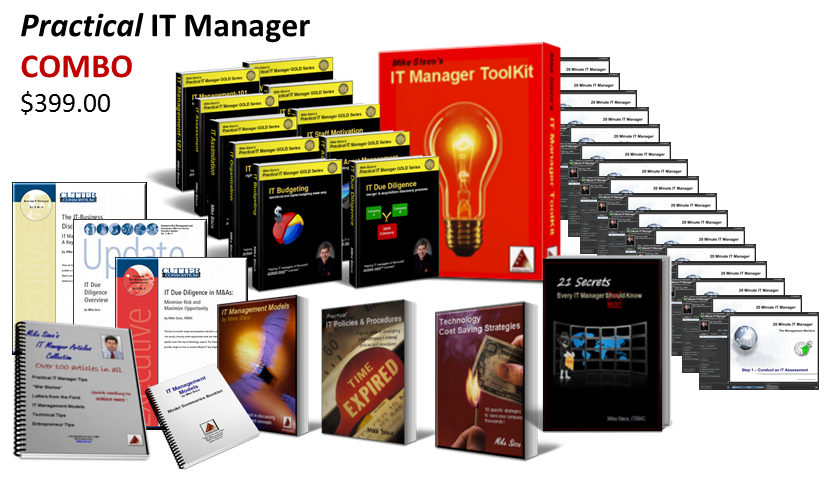 In today’s business environment, it is vitally important for the CIO to become a true business partner of the company’s CEO and CFO. Together, these three executives can drive significant strategies that benefit their company.
In today’s business environment, it is vitally important for the CIO to become a true business partner of the company’s CEO and CFO. Together, these three executives can drive significant strategies that benefit their company.
If the CIO is to gain real “partnership status” with these two company execs, there are a couple of things he or she must do. Becoming a “partner” with your CEO and CFO is not necessarily an easy thing to do, but it’s vital if the company is to achieve its full potential.
The CEO and CFO are the two people looked to most to see that the company performs as expected. They are ultimately responsible to the Board of Directors and stockholders for company performance.
For the most part, company performance is measured in terms of financial performance. Their ability to achieve “the numbers” is enhanced exponentially when they have a CIO who understands the business and operates in “partnership” mode with them.
CEO types often come from the sales or operations side of companies in the same industry. CFO’s often have accounting experience in the industry as well. Industry experience is a critical factor in “operating” a company.
Conversely, CIO’s can come from virtually any industry. Our skills as an IT manager or CIO are actually very transferable across any industry.
Key contributions of an effective CIO
If you look at what strong CIO’s do for a company, it makes a lot of sense that a good CIO can be effective in virtually any company and in any industry.
- assesses business issues and needs
- identifies technology issues, capability and capacity
- defines IT initiatives that address these business needs and issues
- develops strategic IT plans for the company and anticipates need
- builds an IT organization that provides systems stability and security
- positions scalable technology resources to support company growth
- provides responsive support to technology user needs
- implements IT initiatives that deliver tangible business value
- budgets and manages the IT operation to be cost effective
- implements change through technology to improve profitability, productivity, and other business value results
 Sounds sort of like Superman, , , or Wonder Woman doesn’t it?
Sounds sort of like Superman, , , or Wonder Woman doesn’t it?
A CIO wears many hats to be sure. Effective CIO’s take care of business methodically and use proven formulas of success to generate positive results for their company. They can use these processes in any company or industry.
Remember me mentioning earlier that to become the CEO and CFO’s partner there were a couple of things the CIO must do?
First, a CIO must be acutely aware of company financial challenges the CEO and CFO have to deal with. Achieving targeted financial numbers is well over 50% of the executive wing’s mindset and what absorbs much of their time. All you have to do is to watch the anticipation every month when it’s time to produce the company’s monthly financial reports to realize this is the case.
 To be able to relate well with the CEO and CFO in financial terms is extremely important. It’s not something you can fake. To gain “full partnership” status, you have to be able to communicate in such financial terms as “earnings per share”, “expense as a percent of revenue”, “ROI” or “Return on Investment”, “EBITDA” or “Earnings before interest, tax, depreciation & amortization”. You also need to have solid understanding of company P&L’s, the budgeting process, and the issues that can effect earnings, especially as it relates to technology.
To be able to relate well with the CEO and CFO in financial terms is extremely important. It’s not something you can fake. To gain “full partnership” status, you have to be able to communicate in such financial terms as “earnings per share”, “expense as a percent of revenue”, “ROI” or “Return on Investment”, “EBITDA” or “Earnings before interest, tax, depreciation & amortization”. You also need to have solid understanding of company P&L’s, the budgeting process, and the issues that can effect earnings, especially as it relates to technology.
Discussing issues in business value terms must become the norm for a CIO to achieve partnership. Every initiative you recommend must be cost justified and provide tangible and quantifiable business value, , , otherwise, it likely won’t be heard by your CEO and CFO.
Too many IT managers reach a senior management position in smaller and mid-size companies without ever budgeting or having responsibility for a P&L. Lacking an understanding of how the financial engine of a company works makes it very difficult to become an integral partner with the senior management team.
Second, a CIO must understand the business. I stated that strong CIO’s can move from company to company or from industry to industry and be very effective. They can only do that if they learn the business of the company and the industry it is in. Sharp CIO’s make it a priority to “get under the hood” to discover what drives the company and how it is successful. In other words, they learn the business and what makes this type of business “tick” quickly.
Every industry has leverage points where technology can improve profitability, improve productivity, create a competitive edge, or provide other value that’s important for a company’s success in that industry.
For example, in healthcare, there tend to be three major drivers that contribute to operational success beyond the actual medical services provided:
- Regulatory compliance
- Billing for services provided as accurately and as quickly as possible
- Collecting the cash for services rendered
If a healthcare company is heavily paper oriented with little automation, it’s a virtual gold mine for a savvy CIO. Believe it or not, the healthcare industry is still a heavily paper intensive industry.
Every industry has levers like these that can be capitalized on when the CEO, CFO, and CIO combine forces. Within an industry, companies have unique business issues and “one size will certainly not fit all”. What I mean by this is that once you know where the industry leverage points are, assessing a company situation may identify more basic technology issues for a given company. For example, as late as 1999 I was still running into companies without email services. These basic services need to be addressed just like the potential company leverage opportunities that may exist.
Astute CIO’s try not to take anything for granted when learning about a new company. They assess globally and begin “peeling layers of the onion away” as they drill down to identify the specific issues that the company is dealing with.
CEO’s and CFO’s need partners who can help them solve the company’s financial challenge riddle and the only way to do that is by understanding the business. Having a CIO that can speak the financial lingo and who spends money on real issues that makes a tangible difference for the company are valued assets and treasured “partners”.
The CIO is in a unique position in that he or she can facilitate change through technology that can improve the company in so many ways. Your ability to integrate business issues and financial insight into managing the technology resources operation of your company can have the most dramatic and positive effect.
Gaining an executive level perspective in the financial and business needs arena of your company is the first step in gaining two new partners at the top of your company. With partners at the top, your career can really go places, , , without that partnership, you won’t go very far.





















